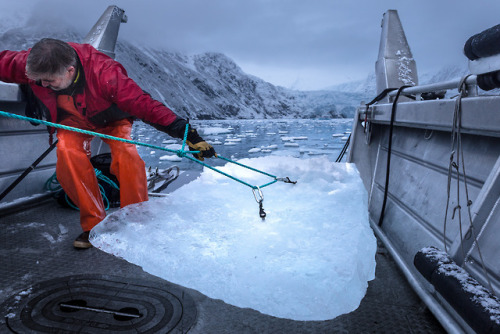#chasing ice
Chasing Ice: Photog Captures Changes in Glaciers Through Time-Lapse Photos
Here’s the amazing official trailer for the upcoming documentary film Chasing Ice, which follows one man as he embarks on an epic photo project around the world:
In the spring of 2005, National Geographic photographer James Balog headed to the Arctic on a tricky assignment: to capture images to help tell the story of the Earth’s changing climate.
[…] Chasing Ice is the story of one man’s mission to change the tide of history by gathering undeniable evidence of our changing planet. Within months of that first trip to Iceland, the photographer conceived the boldest expedition of his life: The Extreme Ice Survey. With a band of young adventurers in tow, Balog began deploying revolutionary time-lapse cameras across the brutal Arctic to capture a multi-year record of the world’s changing glaciers.
[…] It takes years for Balog to see the fruits of his labor. His hauntingly beautiful videos compress years into seconds and capture ancient mountains of ice in motion as they disappear at a breathtaking rate. Chasing Ice depicts a photographer trying to deliver evidence and hope to our carbon-powered planet.
The About page on the Extreme Ice Survey website states,
Guided by the recommendations of glaciologists, in 2007 the EIS team installed its time-lapse cameras at sites that represent regional conditions and have high scientific value. Typically these cameras are anchored on cliff faces above the glaciers. It took six months of experimenting to come up with a camera system sturdy and reliable enough for our purposes. We use Nikon D200 digital single-lens reflex cameras powered by a custom-made combination of solar panels, batteries and other electronics. The cameras are protected by waterproof and dustproof Pelican cases, mounted on Bogen tripod heads, and secured against arctic and alpine winds by a complex system of anchors and guy wires. Each unit weighs more than 100 pounds. Solar panels collect power that is stored in batteries; customized controllers trigger the cameras only when there is sufficient light. Downloads of digital images occur as frequently as every few months or as rarely as once a year, depending on how remote a site might be.
All this is to ensure that the cameras survive long enough to create time-lapse images that span years — or perhaps even decades.
A couple weeks ago I watched the documentary “Chasing Ice” on netflix about the serious impact climate change has had on our glaciers. Time lapse videos taken over a few years show the glaciers shrinking at an incredibly alarming rate. It took my breathe away. We’ve certainly seen the results of climate change first hand this year and it isn’t pretty. If you think this is as bad as it gets, you’re mistaken. This is just the beginning. Warming oceans will lead to more destructive storms, those of which are increasingly more difficult for people to recover from. This hits low income people the hardest. It displaces pets. It leads to lives lost. I want to open a dialogue right now. What small impacts can we make personally to affect change globally? It’s something that’s been on my mind for awhile now. I’m starting by switching to a more vegetable based diet, cutting out the use of paper towels, plastic straws, disposable coffee cups, tampons and face wipes. I’m making it a point to ride my bike more often. What else can we do? I’d love to hear some suggestions.
Also, please please watch Chasing Ice to see for yourself: https://chasingice.com/
Post link
Chasing Ice movie reveals largest iceberg break-up ever filmed - guardian.co.uk)
(11/22/16) Scott Lindquist, Master Distiller of Anchorage Distillery gave me the opportunity to join him on one of his glacier ice harvests. He was the only person in Alaska who holds a permit that allows him to do so. Scott uses the glacier ice to make vodka for the company. It was awesome to see exactly how he does so and being a part of it. The scenery was surreal…
Instagram: @johncasquejo
Post link


